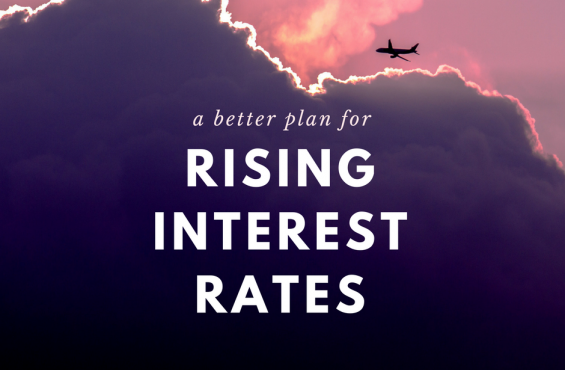Have you ever wished that you had a better plan for rising interest rates?
You know that rising interest rates could really affect the bond market. And you also know that many people—even experts—have been predicting higher rates for years now, and those predictions haven’t really panned out.
Even the Federal Reserve doesn’t always get it right. The Fed anticipated making at least three rate hikes in 2016, but it ended up bumping rates up just once at the very end of the year.
As we talk to investors, we’ve heard about the many different ways they’ve tried to prepare their portfolios for higher rates.
One investor bought into short-term bonds because these bonds are less interest-rate sensitive. But rates stayed low, and her short-term bonds had such low returns that she felt like she was missing out.
Another investor decided to make a large investment in high-yield bonds, which could hold up better than other bonds when rates rise. But high yields turned out to be more volatile than he’d bargained for, and he sold them because he worried that high-yield bonds were a bubble that was about to burst.
Many investors have never had any training on how to effectively adapt to changing markets, so it’s no wonder that they end up making common, but painful, mistakes. They’re trying to do the right thing, but they often end up holding themselves back.
A strategy designed to adapt to changing markets
We’ve been navigating changing bond markets for decades, and one thing we’ve learned over the years is that you need a disciplined strategy that can help you decide what kinds of bond funds to own now and when to move on to other funds.
A solid strategy gives you a way to determine when to own more conservative funds like short-term bond funds, and how to mitigate the risk of high-yield or floating-rate funds.
Our Flexible Income strategy is designed to help you make these important decisions, and it has a proven track record of navigating changing bond markets. Here are three examples:
1. 2008 credit crisis
The 2008 financial crisis was the most severe bond market decline in the last 10 years. Investors shunned corporate bonds of every stripe, and many high-yield and strategic (go-anywhere) bond funds were devastated; some funds lost 25-30% in a matter of weeks.
Our Flexible Income strategy led us to own lower-risk short-term government bonds, which helped us avoid the steep losses from high-yield bonds.
2. 2009 recovery
We didn’t stay in low returning short-term bonds indefinitely. In 2009, as government bonds faltered and corporate bonds charged ahead, we replaced many of our conservative government bond positions with better performing high-yield, strategic and world bond funds.
3. 2016-2017 rising rates
This approach also handily navigated rising interest rates. We didn’t have to predict when or how rates would rise, we simply focused on the funds that were excelling in the current market, and we avoided more interest-rate-sensitive bonds like Treasuries and long-term bonds.
This flexible approach to bond investing has helped thousands of investors know what to do when markets change. It was initially only available to our private money management clients, but today we share this approach with subscribers to our NoLoad FundX newsletter, and we also implement this strategy for shareholders of the funds we manage.
